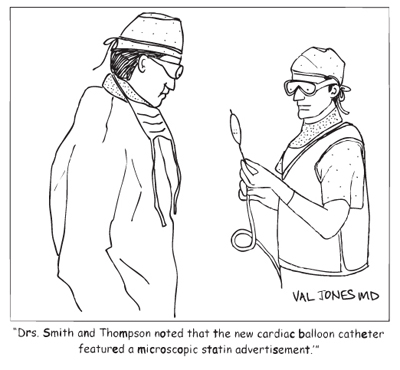April 4th, 2010 by DrWes in Better Health Network, News, True Stories
No Comments »

…and he lived (video) to talk about it:
The man’s heart was pierced as he was nailing boards with a co-worker at a carpentry shop. The shop’s owner said the men were working together, when suddenly, they ran into each other resulting in the nail gun going off.
Oops.
-WesMusings of a cardiologist and cardiac electrophysiologist.
*This blog post was originally published at Dr. Wes*
April 4th, 2010 by David Kroll, Ph.D. in Better Health Network, Health Tips, Opinion, True Stories
1 Comment »

As I stutter through recovery from LungMutiny2010, I’m paying more attention to my diet. So as I try to go out for my 10-minute walk everyday, I still drink some sports drink — usually Gatorade made from the massive vat of powder you can buy at Costco.
We tend to get plenty of sodium in our diet — far too much in the U.S. actually — but I always worry about potassium when I’m sweating (Disclaimer: I am not an exercise physiologist or a cardiovascular or nephrology physician.)
I always thought that the widely-sold sports drinks were the best sources of potassium outside of eating bananas or some dried fruits. I was surprised to learn that an 8-ounce serving of orange juice contains 18-fold more potassium than an 8-ounce serving of Gatorade® (450 mg vs. 25 mg). Who knew? Read more »
*This blog post was originally published at Terra Sigillata*
April 2nd, 2010 by Dr. Val Jones in Better Health Network, Friday Funny, Humor, Medical Art
No Comments »


Here’s a cartoon I created a few years back. Enjoy!
– Dr. Val
*This blog post was originally published at Science-Based Medicine*
March 31st, 2010 by DrWes in Better Health Network, Opinion, Primary Care Wednesdays, True Stories
No Comments »

It’s very generous of Sanolfi-Aventis’s marketing department to make this offer for me to serve as an “advisor” for dronedarone (Multaq), but seriously–I was a bit skeptical that they wanted my “feedback on the reasons for and against utlilization of Multaq® in the appropriate patient as well as to understand communication and educational needs with regard to Multaq® and the atrial fibrillation state in general.”
Where were they when the drug launched? Might it be because this drug hasn’t quite been the blockbuster they’d hoped for?
But, of course, I’d never be swayed to use more of this drug by such important consulting work. No, really.
P.S. Sanolfi-Aventis marketers: Please update your prescriber database with my correct workplace.
–Musings of a cardiologist and cardiac electrophysiologist.
*This blog post was originally published at Dr. Wes*
March 28th, 2010 by DrWes in Better Health Network, Health Policy, Opinion, Research
No Comments »

BACKGROUND
For those who are landing on this page for the first time, be sure to read the background FIRST to these case presentations. The intent here is to compare and contrast two patients, one insured and the other uninsured, from the United States and England as care is delivered today. The U.S. cases are described in detail in this blog and the corresponding cases, British-style, are described on Sarah Clarke, MD’s blog from England.
CASE #1: The U.S. Case of Mr. Thurgood Powell
The ER radio sounds: (*bleeeeee, deeeeeeeeeppppp*) “Rampart, we have a 57 year old white male en route with a 45 minute history of substernal chest pain and diaphoresis. Initial single-lead EKG discloses ST segment elevation. One ASA given, nitro given, BP 96/47, pulse 110, respirations 22, pt diaphoretic…”
ER doctor: “Code cor activated. Cath lab ready. Proceed as soon as possible.” Read more »
*This blog post was originally published at Dr. Wes*














